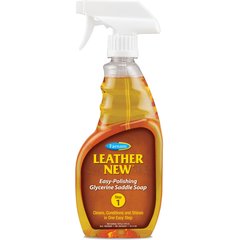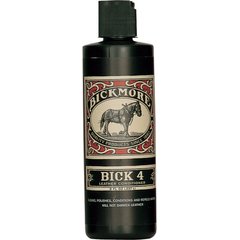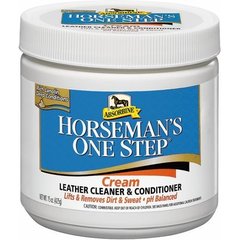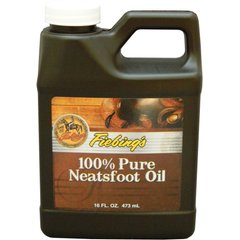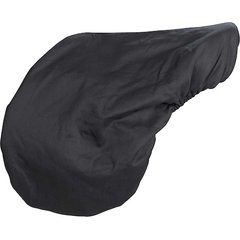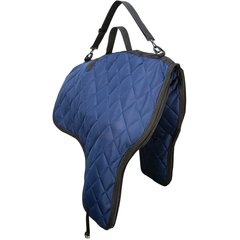How To Prep a Horse Saddle for Storage

Photo by JGalione/E+ via Getty Images Plus
Whether you’re tucking it away for winter or storing it long-term, proper saddle care and storage help protect your saddle and keep it in top shape. With the right prep, you can prevent damage, maintain its quality, and ensure it’s ready to ride again when you are.
How To Prep a Horse Saddle for Storage
Before storing an English or Western saddle, it’s important to properly prepare it, says Kim Pinello, a treeless saddle fitter and owner of Ghost Saddles Plus and The Galloping Grape in Virginia. Here’s how:
- Thoroughly clean it. Pinello recommends using a high-quality saddle soap to remove dirt, sweat, and grime. “I love Leather New spray,” she says.
- Condition the leather. This helps prevent it from drying and cracking while in storage. “Bickmore Conditioner and Horseman’s One Step are excellent choices,” says Pinello. To help prevent rust, she recommends applying a light coat of oil to any metal parts, like the stirrup bars, buckles, and conchos.
- Check your saddle for any damage. This includes inspecting the stitching, billets, and tree for any potential issues. If you spot issues, enlist the help of a saddle repair professional to fix those problems so you can safely use your saddle again when you need it.
- Finally, remove your girth or any cinch straps. “Keeping them tight over long periods can cause stress on the leather or synthetic materials,” Pinello says.
Recommended Products
What Is the Best Way To Store a Saddle?
Before storing the saddle, carefully consider where you’ll be storing it. Patty Barnett, a saddle fitter and tack repair specialist in Connecticut, has seen many saddles damaged by improper storage.
“I saw rodent damage from when a saddle sat over the winter not being used,” she recalls. “Or riders would bring in saddles that sat in a basement next to the hot water heater and sustained heat damage.”
Saddles stored in a damp basement often had significant amounts of mold and mildew.
So where’s the best place to store a saddle? It’s in your house, such as in a spare bedroom or any other space that’s climate- and humidity-controlled. Homes are usually much more controlled environments than tack rooms, and the humidity swings in houses aren’t as extreme as those in barns.
“Most tack rooms are not humidity-controlled,” Barnett says, “so in the winter, [humidity] will dip below 35%, and in the summer, it will get above 70%. Those swings will affect the leather, even during normal use.”
Here are the pros of storing saddles inside your home:
- It helps avoid rodent damage and problems usually associated with low or high humidity.
- It helps prevent rotting in leather. Because leather is porous, humidity fluctuations can take a real toll on its condition. When humidity rises, leather can absorb moisture, which can lead to rotting. Low humidity can cause leather to dry out, eventually leading to cracking.
The downside of storing in your home? Pets.
“Cats love sharpening claws on leather, and dogs think long billets are rawhide chews,” she says. So it’s ideal to store your saddle in a room that pets can’t access.
What Is the Best Rack for Saddle Storage?
Once you decide where you’ll store your saddle, carefully choose a storage method. Saddle racks are a popular option because they keep saddles off the floor and help keep the form of the leather.
But Pinello cautions that leaving a saddle on a basic metal rack with narrow bars can result in several types of damage.
Preventing Pressure Points
“Metal racks with narrow bars can create pressure points, leading to compressed or misshapen panels on English saddles or warped bars on Western saddles,” she says. “The leather may take on the shape of the rack, causing long-term creases or dents.”
To prevent damage, Pinello recommends racks with wide, padded, or curved surfaces that distribute the saddle’s weight more evenly. Additionally, wooden or PVC racks are less likely to create pressure points than thin metal bars. Wall-mounted or adjustable racks also help keep the saddle in its natural shape.
Padding the Saddle
“To prevent panel damage, place a soft pad or towel over the rack before setting the saddle down,” says Pinello. You can also cut slits into pool noodles and place them over metal bars to help protect your saddle.
If you must use a thin metal stand or rack, Barnett recommends using many layers of saddle pads or blankets between the rack and your saddle.
“Try to mimic a horse’s back and topline as much as possible,” she says. “Your saddle’s panels will mold to whatever it’s sitting on.”
Covering the Saddle
Barnett also recommends using a saddle cover. Alternatively, you could put your saddle inside a saddle bag, but leave the zipper open a little for air flow.
Once your saddle is in storage, be sure to periodically check on it. Inspect it every few months and look for issues like mildew growth or unusually dry weather. If you spot these problems, you may need to change where or how you’re storing the saddle.
Recommended Products
Can You Put a Saddle in a Container?
Yes, you can put a saddle in a container or tack trunk, but it’s important to choose the right container.
Consider the following when choosing a container:
- Is it airtight and ventilated? Pinello explains that a completely airtight container can trap moisture and cause mold to grow, so choose a container that’s ventilated.
- Are you using moisture-absorbing products? She also recommends using silica gel packs or moisture-absorbing products like DampRid to help reduce humidity. “Wrap the saddle in a breathable cover to prevent scratches,” she says.
- Is it rodent-proof? Consider whether the tack trunk or container you choose is rodent-proof. You can place mothballs and rodent repellents near your saddle, but not directly on it. Storing saddles off the ground can also help avoid rodent damage.
How To Properly Bring a Saddle Out of Storage
After your saddle has been in storage, carefully inspect it for any damage before you ride in it again. Cracks, mold, mildew, rust, and rodent damage can all potentially occur, so check the saddle over for these issues.
Pinello recommends taking the following steps:
- Clean and condition the leather to help refresh the saddle.
- Check to make sure the saddle tree isn’t cracked.
- Verify that the panels or bars haven’t compressed while in storage.
- Double-check your stirrup leathers, billets, and cinches because leather can weaken over time.
- Look out for dryness or stretching and replace any components that have been damaged.
If you’re uncertain about potential issues you’ve found or aren’t sure how to check your saddle’s tree or panels, contact a professional, such as a saddle repair specialist.
Remember that your horse’s shape may have changed with some time off, so it’s a good idea to have a saddle fitter verify that your saddle still fits before you go for your first ride.
